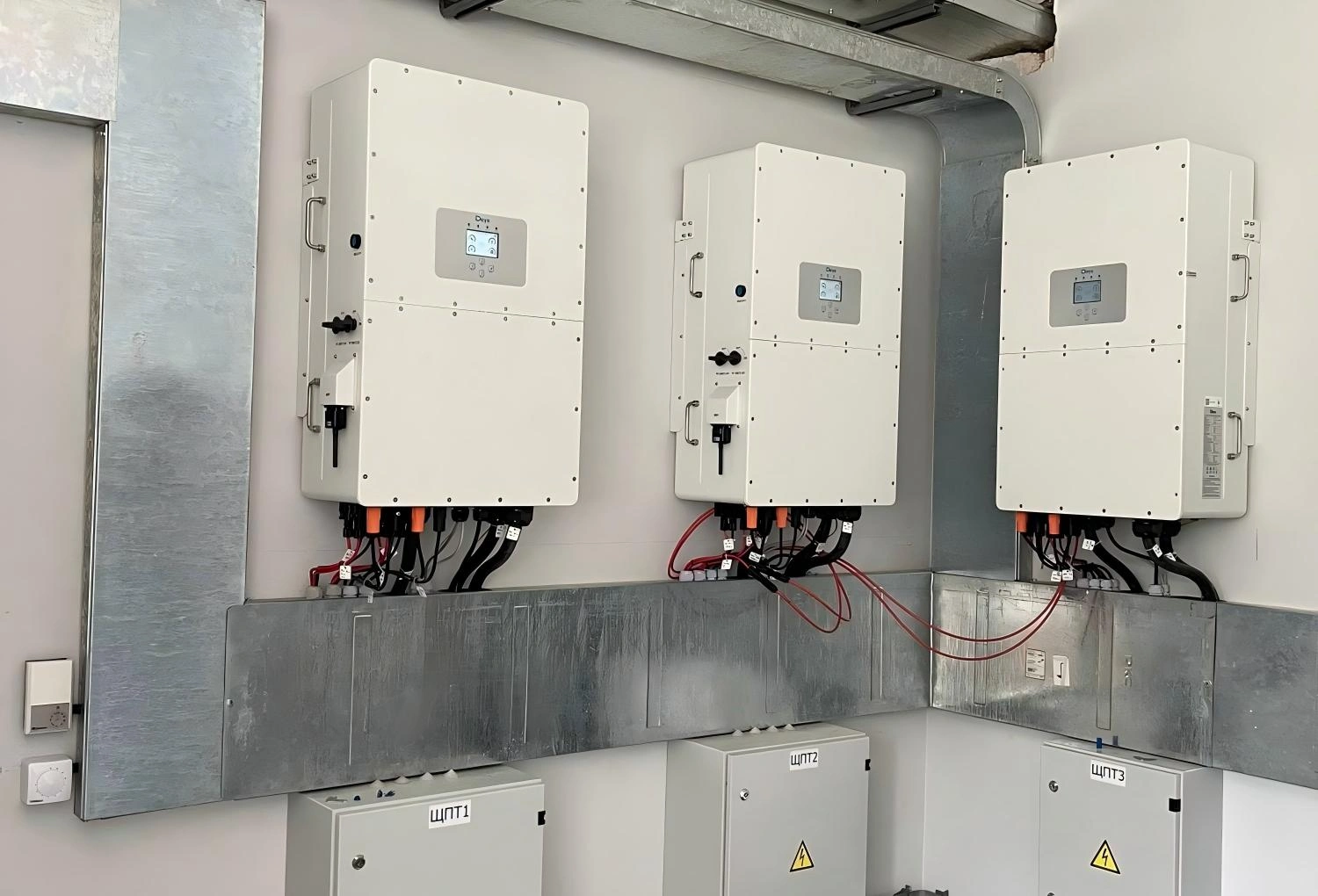
Project Overview
Project Location
Europe
Project Capacity
SUN-50K-SG01HP3-EU-BM4
Project Highlights
This case study outlines the implementation of a advanced solar energy storage system at a commercial facility. The core of this installation consists of three Deye SUN-50K-SG01HP3-EU-BM4 three-phase hybrid inverters, configured in a parallel setup. This system was designed to significantly reduce grid energy reliance, ensure operational continuity during power outages, and provide substantial cost savings through intelligent energy management for the client.
Project Overview
Project Location: A commercial/industrial facility in Europe. System Core: 3 x Deye SUN-50K-SG01HP3-EU-BM4 50kW Hybrid Inverters. System Configuration: Parallel setup, creating a robust and scalable power source.
Key Components:
Three Deye 50kW Hybrid Inverters. A high-voltage battery bank (e.g., Deye’s BOS-G series). A substantial photovoltaic (PV) array.
Primary Goal: To achieve a high degree of energy independence and ensure an uninterrupted power supply for critical operations.
Deye 50kW Hybrid Inverter Key Features:
High-Efficiency Parallel Capability: The system leverages the inverter’s built-in support for up to 10 units in parallel. This three-unit configuration provides a scalable power foundation, allowing for a potential future expansion. The parallel operation is streamlined for easy setup and synchronized management.
Advanced Energy Management with 6 Time Periods: A standout feature is the six programmable time slots for battery charging and discharging. This allows the facility to automate its energy strategy, charging batteries with solar or off-peak grid electricity and discharging during expensive peak rate hours, leading to significant savings on electricity bills.
Uninterruptible Power Supply (UPS)-Grade Switching: The inverters feature a UPS-level grid-to-backup switching time . In the event of a grid failure, the system switches to battery power so quickly (reportedly within 4ms for similar Deye models) that sensitive critical equipment continues to operate without interruption.
Dual 100A Battery Charging/Discharging: Each inverter is equipped with two independent battery ports, supporting a maximum charging and discharging current of 100A (50A+50A). This enables rapid energy transfer, supporting high-power demands and ensuring efficient use of the battery storage.
Maximum Solar Harvesting with 4 MPPTs: With four Maximum Power Point Trackers (MPPTs) per inverter, the system can efficiently manage multiple PV string arrays with different orientations and tilings. This design maximizes energy harvest from the solar installation, even under suboptimal or shaded conditions.
Grid-Tied with Diesel Generator Support: For extended periods of poor weather, the system can seamlessly integrate a diesel generator as a backup power source. This ensures continuous power availability and further strengthens the facility’s energy resilience.
Achieving Energy Independence
The integration of three Deye 50kW inverters directly contributes to the client’s energy independence through several key mechanisms:
Maximized Self-Consumption of Solar Energy: The high-efficiency MPPTs and intelligent control systems ensure that a maximum of the solar energy generated is used on-site, directly powering operations and charging the batteries, thereby reducing grid consumption to a minimum.
Intelligent Peak Shaving and Load Management: The system’s “intelligent load” and “grid peak shaving” functionalities allow it to dynamically manage power flow. During times of high internal demand, the system can supplement grid power with stored battery energy to avoid drawing expensive peak power from the utility.
Creation of a Resilient Microgrid: The parallel inverter setup, coupled with battery storage and solar generation, effectively creates a stable, local microgrid. This setup can operate independently from the main grid during outages, powering the entire facility or pre-defined critical loads.
Optimized Energy Economics: By using the programmable time-of-use settings, the system automatically makes the most cost-effective decisions, storing energy when it is cheapest and using it when it is most expensive. This strategic energy arbitrage delivers direct financial benefits and reduces reliance on the volatile grid market.
Conclusion
The deployment of three Deye 50kW hybrid inverters in a parallel configuration has successfully transformed the client’s energy profile. The project demonstrates a viable and robust model for commercial entities seeking to enhance their energy independence, achieve significant operational cost savings, and build resilience against grid instability. The system’s scalability, intelligent management features, and high-performance specifications make it a future-proof investment in sustainable and reliable energy.
